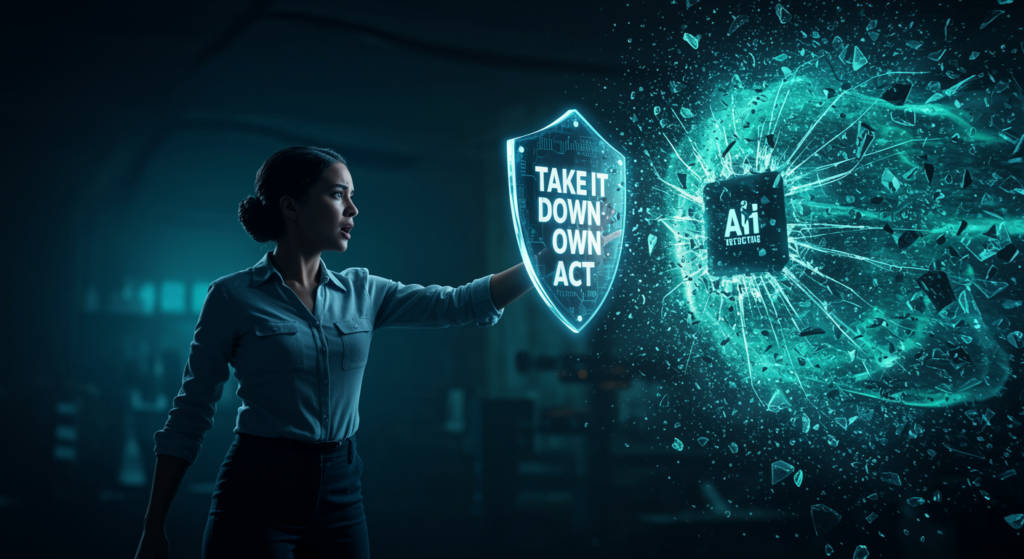
Deepfakes Legislation Empowers Victims of Revenge Porn
Understanding the Rise of Deepfakes Legislation in Combating Image Abuse
Have you ever wondered how rapidly advancing technology like AI is reshaping our digital lives—and not always for the better? Deepfakes legislation is stepping in to address this very issue, protecting individuals from the growing threat of nonconsensual explicit content. Artificial intelligence has transformed how we create and share digital media, but its dark side includes deepfakes—realistic, AI-generated images or videos that fabricate intimate scenes without consent. This surge in deepfakes has intensified the nightmare of revenge porn, leaving victims to grapple with online humiliation, anxiety, and long-lasting emotional scars.
In a world where sharing goes viral in seconds, Congress has responded by enacting strong federal safeguards. These laws target both real and AI-generated intimate imagery, offering a shield for those targeted and holding creators accountable. By focusing on deepfakes legislation early on, we’re seeing a shift toward prioritizing victim rights in the digital age, ensuring that technology doesn’t outpace our ability to protect people.
The Take It Down Act: A Milestone in Deepfakes Legislation
With bipartisan backing, the Take It Down Act represents a game-changer in deepfakes legislation, criminalizing the spread of nonconsensual intimate imagery across the nation. This federal law fills gaps left by varying state regulations, especially as AI makes it easier to produce deceptive content. For years, victims faced inconsistent protections, but now, deepfakes legislation provides a unified approach, making it illegal to publish or threaten to publish explicit material without consent—whether it’s real or artificially created.
Imagine scrolling through your social feed only to find your image altered in harmful ways; that’s the reality for too many. The Act’s key provisions include criminal penalties for offenders, emphasizing how deepfakes legislation is evolving to match technological threats. One major win is the requirement for platforms to act fast—more on that below.
Main Provisions of This Deepfakes Legislation
Let’s break down the core elements that make the Take It Down Act so effective. First, it criminalizes the intentional sharing of explicit images or videos, regardless of whether AI was involved, as long as consent wasn’t given. This provision highlights how deepfakes legislation is adapting to modern challenges, ensuring that victims aren’t left defenseless.
- Mandatory takedown: Any reported content must be removed by websites or social media within 48 hours, giving victims a reliable path to reclaim their privacy.
- Duplicate removal: Platforms have to hunt down and delete similar content to stop the spread, a direct response to how deepfakes can proliferate online.
- Clear consent rules: Just because someone agreed to a photo doesn’t mean they okayed its public release, a nuance that deepfakes legislation clarifies brilliantly.
These steps not only modernize protections but also create a consistent framework across states, proving that deepfakes legislation can keep up with AI’s rapid evolution. If you’re dealing with online harassment, knowing these rules could be your first line of defense.
The Urgent Need for Deepfakes Legislation: Scale and Impact of Abuse
Why did we need this deepfakes legislation in the first place? While many states had banned revenge porn, few addressed AI-generated deepfakes specifically, leaving victims in a legal limbo. The harm is profound—think about the anxiety from knowing explicit content could go viral and never fully disappear. Studies show that victims often endure severe mental health issues, from depression to PTSD, as a result of this abuse.
For instance, young women are disproportionately targeted, facing not just emotional turmoil but also risks like social isolation or even suicidal thoughts. Deepfakes legislation aims to tackle this by standardizing responses, preventing the kind of delays that once allowed harmful content to spread unchecked. Have you heard stories of celebrities fighting back against deepfakes? Their experiences underscore why federal action is essential for everyone.
How Deepfakes Legislation Empowers Victims Through the Take It Down Act
This new deepfakes legislation puts power back in the hands of victims by emphasizing speed and accessibility. Under the Act, you can report content directly to platforms or authorities, triggering a 48-hour removal process that cuts through the red tape. It’s a simple yet transformative step, allowing individuals to regain control over their digital footprint without endless battles.
Take the case of someone like Elliston Berry, a teen whose AI-altered images spread rapidly among peers. Before deepfakes legislation like this, her family’s pleas went unanswered for too long. Now, victims have a clear mechanism to act, turning what was once a frustrating ordeal into a manageable process. What if you or someone you know faced this—wouldn’t knowing about these options make a difference?
Victim Stories: The Real Power of Deepfakes Legislation
Personal accounts reveal why quick action in deepfakes legislation matters so much. For Berry, the delay in removal exacerbated her trauma, but the Take It Down Act changes that narrative. Victims can now report through dedicated channels, with platforms required to verify and act swiftly, reducing the long-term damage of exposure. This not only restores dignity but also encourages more people to speak up, knowing the system is on their side.
Deepfakes Legislation’s Effect on Tech Platforms
Tech companies can’t ignore this deepfakes legislation; it’s reshaping how they handle content. The Act demands transparent processes for receiving reports, removing flagged items, and blocking re-uploads, holding platforms accountable like never before. This shift challenges the old protections under Section 230, pushing for a balance between free speech and victim safety.
Of course, critics worry about potential overreach, but the law includes safeguards to protect legitimate expression. For example, it differentiates between consensual sharing and abuse, ensuring deepfakes legislation doesn’t stifle creativity. If you’re in tech, this could mean rethinking your moderation tools—after all, preventing harm is good for users and business alike.
Balancing Free Speech with Deepfakes Legislation
Addressing concerns head-on, deepfakes legislation incorporates due process to avoid censorship pitfalls. Lawmakers have built in exceptions for protected speech, focusing enforcement on clear cases of nonconsent. This careful approach shows how deepfakes legislation can evolve without compromising core rights, making it a model for future tech regulations.
What You Should Know About Deepfakes Legislation as a Victim or Advocate
If nonconsensual imagery has affected you, deepfakes legislation offers vital tools for recourse. Start with immediate reporting on platforms, where new requirements ensure faster responses, or pursue legal action against those responsible. Groups like the Electronic Privacy Information Center provide resources to navigate this process.
Here’s some actionable advice: Preserve evidence like screenshots right away, report through official channels, and don’t hesitate to involve law enforcement. By leveraging deepfakes legislation, you can hold offenders accountable and seek damages, turning the tide on digital abuse.
The Road Ahead for Deepfakes Legislation and Revenge Porn Laws
Looking forward, deepfakes legislation like the Take It Down Act is just the beginning. As AI advances, we’ll need ongoing updates to cover emerging threats, from more sophisticated deepfakes to broader privacy issues. Experts predict priorities like expanding international cooperation to tackle cross-border content.
What are your thoughts on how this could evolve? Whether it’s through stronger AI detection or community education, staying vigilant is key. For now, this legislation sets a strong foundation, reminding us that technology should serve people, not harm them.
References
[1] MPR News. “Take It Down Act addressing nonconsensual deepfakes and revenge porn passes: What is it?” Available at: MPR News Article.
[3] U.S. House of Representatives. “U.S. Senate Passes Salazar’s Bill to Protect Deepfake Revenge Porn Victims.” Available at: http://salazar.house.gov/media/press-releases/us-senate-passes-salazars-bill-protect-deepfake-revenge-porn-victims.
[4] ABC 33/40. “Take It Down Act passage intended to empower victims of deepfakes, revenge porn.” Available at: https://abc3340.com/news/nation-world/take-it-down-act-passage-intended-to-empower-victims-of-deepfakes-revenge-porn-nonconsensual-intimate-imagery-law-social-media-ai-melania-trump-congress-tech-companies.
[6] Roosevelt Institute. “Case for the Digital Platform Act.” Available at: https://rooseveltinstitute.org/wp-content/uploads/2020/07/RI-Case-for-the-Digital-Platform-Act-201905.pdf.
[7] CBS News. “House passes Take It Down Act to help victims of deepfake pornography.” Available at: https://www.cbsnews.com/news/house-take-it-down-act-vote-deepfake-pornography-victims/.
[8] EPIC. “EPIC Comment on NIST GenAI Draft Documents.” Available at: https://epic.org/wp-content/uploads/2024/06/EPIC-Comment-NIST-GenAI-Draft-Documents-06.02.24_Appendices.pdf.
As we wrap up, I encourage you to share your experiences or thoughts in the comments below. If this topic resonates, explore more on our site about digital privacy and AI ethics. Let’s keep the conversation going—your input could help others feel less alone.
deepfakes legislation, revenge porn law, Take It Down Act, victim protection, AI-generated content, nonconsensual intimate imagery, digital privacy laws, online abuse prevention, federal tech regulations, deepfake victim rights







